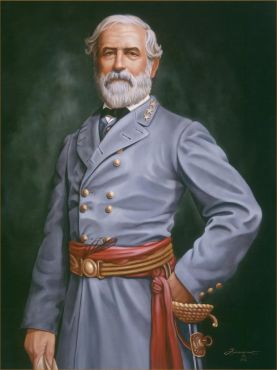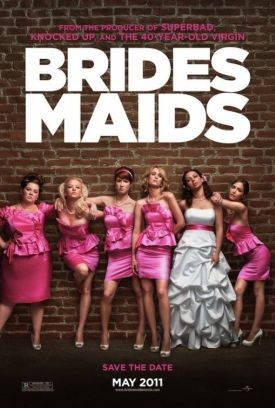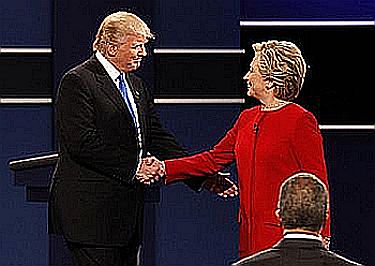Warlord Rules
From The New CriterionThe Prophet Muhammad — “peace be upon him” as the BBC has sycophantically taken to adding when the name is mentioned in its broadcasts — with a cartoon bomb in his turban? Well, it’s not exactly a side-splitter. Danish humor, I guess. They must be killing themselves in Copenhagen. But then you wouldn’t have thought it particularly controversial to suggest that an awful lot of those who are letting off bombs in the world today, many of whom are blowing themselves up along with them, are doing so in the name of that same gentleman. But so it is, it seems. Of course, the anti-Danish riots — now there’s a phrase I never thought I’d have occasion to write — in the Islamic world were a put up job, as was the outrage occasioned by this and some other cartoons in the first place. The dozen drawings, most completely inoffensive, had appeared in the Danish newspaper Jyllands-Posten months ago without exciting comment. It was only when a Danish Imam, Ahmed Abu-Laban, took them — together with some much more offensive ones that were not part of the original collection and whose provenance has not been explained — to show around to some of his more prominent fellow members of the Muslim Brotherhood in the Middle East that the ball really got rolling.
But if, in most of the places where demonstrations took place, no demonstrations take place without official sanction, it doesn’t necessarily mean that the outrage they manifested wasn’t genuine. In fact, the one thing we know about Islamic societies is that it is still quite easy for a traveling imam with a portfolio of dodgy cartoons to appeal to Islamic honor in a way that has been quite foreign to us in the West for at least a century. The nearest we now get to an equivalent is the American street gangs and the hip hop culture that mythologizes them — in particular their eternal demands for “respect” backed up with scarcely disguised menaces of violence. Most of the rappers and gang leaders direct their threats and insults at each other, which leaves the rest of us in the relatively secure position of on-lookers, a mere audience for this theatre of honor. How far we admire its extravagant words and gestures and sometimes even deeds will of course depend on that position of security. But in the matter of the Danish cartoons we — meaning we who write and comment on public affairs — have suddenly found that we are among the players.
Not that the controversy still hasn’t got its entertaining side, and I don’t just mean the surreal pleasure of watching chanting demonstrators waving signs reading: “Freedom of Expression Go To Hell.” It’s always amusing to find the media caught up in one of its many self-contradictions, but rarely can the contradiction have been so richly satisfying as this one. On the one hand you have the sacrosanct principle of the freedom of the press, and in particular the freedom of the press to be not only critical but irreverent and satirical towards all conventional pieties and established authorities. On the other hand you have what in the wake of the media’s reaction to the Iraq war has become the almost equally sacrosanct belief that anywhere there are Muslims rioting or blowing people up or beheading them or otherwise up in arms against the West it must be the fault of American foreign policy. Certainly, no blame could possibly attach to the Western media themselves, who think they know better than anybody what excites “the Arab street” — and how to keep it from being over-excited. How delicious must have been the irony felt by the Bush administration’s spokesmen as they gently clucked over the media’s lack of “responsibility” in publishing the cartoons.
“We all fully respect freedom of the press and expression,” said State Department spokesman Kurtis Cooper, “but it must be coupled with press responsibility. Inciting religious or ethnic hatred in this manner is not acceptable.” Another spokesman later went even further, saying: “We find them offensive, and we certainly understand why Muslims would find these images offensive.” Even former President Bill Clinton got into the act, referring to the “totally outrageous cartoons against Islam” to an Arab audience in Qatar. Of course, no politician would dare to complain — though some of us might think many politicians have a perfect right to complain — about the offensive treatment meted out to a politician by the media, so it must be like a balm to the soul when those who have been abused themselves find a form of media offensiveness they can censure with perfect confidence in their own moral irreproachability. Just think of the deaths and injuries from the riots and other violence that the media’s lack of “responsibility” has led to! Tsk, as they say, tsk.
The whole furore also cast an interesting light backwards on to the false report in Newsweek last year that American interrogators at Guantánamo Bay had desecrated a Koran. At the time it was supposed to have been a scandal that the interrogators had done such a shocking thing — though of course they hadn’t. Now the media had to try very hard to find reasons not to say that the mockery of sacred symbols was what a free press was all about and that the rioters should grow up and learn to live with it. “There is,” said The Independent of London, “no doubt that newspapers should have the right to print cartoons that some people find offensive. Indeed it goes to the very nature of the political cartoon that it seeks to make a point through exaggeration, distortion and caricature — a process which is, by definition, intended to needle those being criticised, or their supporters. In a free society it is proper that speech, and other forms of expression, should be free.” Now there’s a ringing declaration for you! Even more forthright was the view of the editor of France-Soir who republished the cartoons in solidarity with Jyllands-Posten and headlined: “Yes, we have the right to caricature God.” The paper even published its own cartoon of Muhammad sitting on a cloud alongside Buddha and two other god-like figures supposed to represent the Jewish God and the Christian God — funny, but I always thought they were one and the same, like Superman and Clark Kent — one of which says: “Don’t complain Muhammad, we’ve all been caricatured here.”
The editor was sacked the next day. God is not mocked, it seems, and neither are those who are prepared to riot for what they believe in. On the other side of the fence the editor of the Jordanian newspaper Al-Shihan had run some of the cartoons and then editorially asked: “What brings more prejudice against Islam, these caricatures or pictures of a hostage taker slashing the throat of his victim?” He, too, was sacked. You’ve got to wonder if either editor was so naïve as not to know that reasoned debate had already been hijacked by fear, or if one or both of them was making a doomed but magnificent gesture in protest at the fact. No such quixotism, however, had any charms for the vast majority of the media. In Britain, even the left-wing Guardian solemnly opined that
It is one thing to assert the right to publish an image of the prophet. As long as that is not illegal — and not even the government’s amended religious hatred bill makes it so — then that right undoubtedly exists. But it is another thing to put that right to the test, especially when to do so inevitably causes offence to many Muslims and, even more so, when there is currently such a powerful need to craft a more inclusive public culture which can embrace them and their faith.”
It beggars belief that the Guardian would have been so solicitous if the offended sensitivities had been those of Christians or Jews. But then Christians and Jews tend not to blow up those who offend them, or saw off their heads for the video-cam. As our own Mark Steyn put it with characteristic pungency in an American context:
NBC is celebrating Easter this year with a special edition of the gay sitcom “Will & Grace,” in which a Christian Conservative cooking-show host, played by the popular singing slattern Britney Spears, offers seasonal recipes — “Cruci-fixin’s.” On the other hand, the same network, in its coverage of the global riots over the Danish cartoons, has declined to show any of the offending artwork out of “respect” for the Muslim faith. Which means out of respect for their ability to locate the executive vice- president’s home in the suburbs and firebomb his garage.
With few and isolated exceptions the mainstream press both in Britain and America fell into line with the view that it had a perfect right to publish any criticisms of religion it saw fit, but that in the case of these particular cartoons for various reasons it didn’t see fit. Either they were too feeble or poorly drawn or uninteresting or tasteless. “We prefer not to cause gratuitous offence to some of our readers, a policy we also apply, for example, to pictures of graphic nudity or violence,” explained the Telegraph. “This newspaper vigorously exercises its freedom of expression every day,” Executive Editor Len Downie of the Washington Post told the paper’s Ombudsman. “In doing so, we have standards for accuracy, fairness and taste that our readers have come to expect from The Post. We decided that publishing these cartoons would violate our standards.” And very convenient standards they turned out to be too! The New York Times said it was not necessary to publish the cartoons, as they could be easily described, while the London Times offered up a fantastical analogy: “The Times would, for example, have reservations about printing a cartoon of Christ in a Nazi uniform sketched because sympathisers of Hitler had conducted awful crimes in the name of Christianity.”
Well, one reason it might have such reservations is that any such cartoon would be historically false. Neither Hitler nor his “sympathisers” committed any of their awful crimes in the name of Christianity. The Nazi ideology was explicitly anti-Christian. It is the Islamicists who nowadays speak admiringly of Hitler and regret that he was unable to complete the extermination of the Jews. Just think what a lot of trouble it would have spared the poor terrorists, who now have to knock them off a few at a time with suicide bombings. Anyway, we get the idea. The tough, incorruptible and fearless media whose mission it is always and everywhere to speak truth to power regardless of threats or intimidation has witnessed the rise of a new and very frightening sort of power in the world — and decided that it has better things to do than to describe it in less than “respectful” terms. What has not been widely noticed, I think, is the extent to which this new-found sensitivity to religious feelings on the part of the Western media represents a de facto adoption by many of the leaders of thought and opinion in formerly Christian countries of Islamic — which is to say pre-Enlightenment — standards of moral judgment.
Allow me to explain. Many have been the complaints of those who have dared to complain at all about the protests of the Islamists’ “hypocrisy.” The Times leading article mentioned above went on to chide: “Consistency would also be a virtue. The anger directed at these cartoons by certain Muslims would carry more weight if pictures that crudely insult Jews and Christians were not found regularly in the Middle East. To contend that faiths of many forms merit a degree of deference, but not absolute protection, is one notion. To insist that this principle be applied selectively is another, quite indefensible, assertion.” Is it indeed “quite indefensible”? Well, well. Who knew? Die Welt, at least, reprinted four of the cartoons when its editor, Roger Koeppel, took a similar line: “The protests from Muslims would be taken more seriously if they were less hypocritical. . . When Syrian television showed drama documentaries in prime time depicting rabbis as cannibals, the imams were quiet.” It’s nice to think that Germans, like other Westerners, take the Kantian maxim of acting only on universal principles so much for granted that they can’t even imagine any other way of proceeding, but it is not so elsewhere in the world.
Even in Germany, they prohibit Holocaust denial. When the waggish Ayatollah Khamenei of Iran accused the West of hypocrisy for passing laws like that while appealing to free speech orthodoxies in the matter of the cartoons, Michael Kinsley could barely contain himself:
Of course it is not Western values that are trampling freedom of expression, it is the ayatollah’s own values, combined with the threat of violence. The other problem with his little joke about double standards, and with the whole, supposedly mordant, comparison between denying the Holocaust and portraying the prophet is that the offended Muslims do not want a world where people are free to do both. They don’t even want a world where people are not free to do either, which would at least be consistent. They want a world where you may not portray Muhammad (even flatteringly, slaying infidels or whatnot), but you may deny the Holocaust all day long.
Do tell! No doubt, now that that fantastic bit of hypocrisy has been exposed, they will be shamed into compliance with our more enlightened Western standards. Except that it is not hypocrisy at all. Hypocrisy only makes sense in a Kantian universe in which everyone is supposed to be bound by the same rules. Islamic culture does not inhabit that universe. Its state of mind remains essentially that of a primitive honor culture: one in which it is entirely right for me to do to you what it would be entirely wrong for you to do to me. This is not hypocrisy. It is, rather, a demand for recognition, for honor, for “respect,” for acknowledgment of the right of the demander to behave by different rules because of who he is — and because he has the power to make such demands. In short, the cartoon protests were part of a larger scrap about who gets to be the village headman, the neighborhood tyrant, the petty war-lord — someone who has the right to treat his rivals with contempt because the rivals are not in any position to resent it.
The Western media, while desperately clinging to their Enlightenment principles, have effectively recognized the war-lord’s right to make such demands. It is a right made by might, but the highly-principled media can always hide the fact from themselves by reminders about how very respectful to all religions their extremely high principles require them to be. Those without quite so much to lose, however, might have taken notice from another of the themes of the demonstrations how little any of this really had to do with religion. One of the chants of the crowd of several hundred demonstrating outside the Danish Embassy in London went like this: “UK you must pray [pay?], 7/7 is on its way.” Pray or pay, either way the allusion to last summer’s bombings in the London Underground is a chilling reminder that to the most determined of these people the cartoons of the Prophet are merely a pretext. Like any bully, they will always be able to find further causes of offense, and to persuade others to take them as the occasion for further acts of intimidatory violence. We in the West with our mix of lukewarm religion and rather more energetically held atheism — and the fraying sense of tolerance that holds us together — offend such people merely by existing.
Charles Moore, who used to edit the Telegraph and now writes a column for it, noticed that Stewart Lee, author of Jerry Springer: The Opera — which represents Jesus dressed in a diaper — had “suggested that it was fine to offend Christians because they had themselves degraded their iconography; Islam, however, has always been more ‘conscientious about protecting the brand.’”
The implication of the remark is fascinating (Mr Moore writes). It is that the only people whose feelings artists, newspapers and so on should consider are those who protest violently. The fact that Christians nowadays do not threaten to blow up art galleries, invade television studios or kill writers and producers does not mean that their tolerance is rewarded by politeness. It means that they are insulted the more.
Mr Moore is ever too much the gentleman to suggest that he himself would dream of sanctioning a violent response to, say, the latest show by the BritArt duo Gilbert and George at the White Cube Gallery in Hoxton, London — a show called Sonofagod Pictures and featuring “the head of Christ on the Cross replaced with that of a primitive deity” and a sign reading “God loves F***ing.” But if we find that we have awakened from the Enlightenment dream and are, willy nilly, back in the world of the rappers and the gang leaders and the primitive war-lords, maybe it’s time that we too started thinking about protecting some of the good old brands of Western civilization.
Discover more from James Bowman
Subscribe to get the latest posts to your email.






